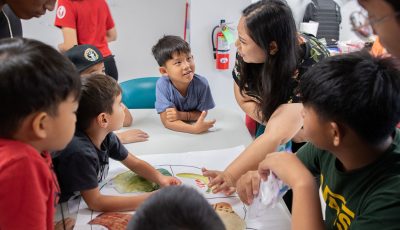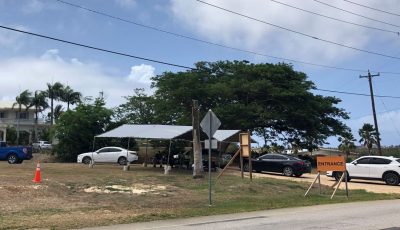Autism in April madness
The stats are alarming. When I attended the 2002 World Conference on Autism in Melbourne, the ratio of children diagnosed with autism was 1 out of 500. When my daughter in ’95 was PDD-NOS’d, it was 1 out of 1,000. The latest in print media is now 1 out of every 60. We’ve come a long way, baby!
Various explanations are offered. The worn-out explanation on the ratio increase is the convenient canard that we have improved diagnostic focus and reporting. Duh. This is avoidance of a reality of a high order!
The convenient standby is the abstract debate on nurture vs. nature with the sentiment now leaning toward nature. Autism is inherited, we are told, but in a complicated gene transmission. In my case, “nature” gets a hearing. Both my children in my second family, the first, now 22, and the second, turned 19 yesterday, respectively, have physical, emotional and cognitive features that put them on the side of the differently-abled. My eldest girl in my first marriage, out of the genetic line of the second marriage save through me, has since had her second son under the PDD-NOS diagnosis.
Ironically, I always felt that my second wife thought of herself as the genetic source of the spectrum. With the diagnosis of a grandson from my first wife, I would be the source of the influence if genetics were the main source.
I shan’t dismiss “nurture” too quickly either. I think that the chemical input into our body metabolism, since we started using preservatives on food and medicine (vaccine mercury preservatives is targeted by some parents), and on food items, might also be responsible. I’ve watched the alteration of food inputs in the Chinese diet in Asia’s mainland in the last five years coincidentally simultaneous with the increase of autism incidence in the population, now alarmingly reported and noticeable in a culture that has a well-developed sense of health and well-being on its track record.
It is autism in April that grabs my attention since my second marriage collapsed as a consequence of both our children being diagnosed within the spectrum. With Saipan’s old PACA (Parents’ Association of Children with Autism), and later, STaRPO (Saipan, Tinian, and Rota Parents’ Organization) that expanded to include cerebral palsy and Down syndrome along with ASD (autism spectrum disorder), and knowing the islands’ growing diagnosis of ASD, and the concomitant parents’ anguish as many marriages would not hold from the attention the syndrome required, we carry the scars of close quarter wars.
Perhaps, the ASD diagnosis itself needs refining. It now covers three general categories: PDD-NOS (essentially means one does not fit the norm but “we do not know what to call you”), Asperger’s (talented but weird), and general autism (do not behave in a normal fashion in language development, social interaction, and engages in repetitive behavior). Separating them might disperse the numbers on the ratio but it will not get us any closer to understanding how some of our children develop an out-of-the-norm neural ability from neural inflammation or “excitatory neurons” in the brain.
Maybe the category “normal” itself has to be closely looked at. We do know that no two individuals are ever the same, even for identical twins, and yet we insist on treating people from a rule of thumb that 60 percent fits a norm and the extreme 20 percent of both ends are the unusual, or worst, “abnormal”! Educational terms are very instructive. We “mainstream” the differently-abled. We run schools as if they are factory lines of moldable brains to fit a pattern, and grade them according to how quickly and how well they fit prescribed ideals. The 40 percent on both ends who are either erratic or non-complaint are candidates for SpEd!
We are only too familiar with the excruciating pain autism engenders on the ground. I remember a bright young student in sixth grade at SVES who did not fit the norm but was mainstreamed from SpEd, and given to tantrums when resistant to group behavior (as was often required in classes of 25-30 students). I am sure she was frustrated as she really tried hard to learn. The best I could offer was be a glorified baby-sitter who managed to keep his cool 99 percent of the time. She did not get the pedagogical attention she deserved.
Parents gathered around PACA, mostly at the Marianas Resource Center at Oleai’s UMC, and later, at CK’s STaRPO, anguished their souls and their marriages into the rocky precipices of despair. It is time to abandon the one-track route to onion skin and let our classrooms reflect the collaborative efforts that now characterize our normal communal endeavors. Teachers and students can team teach and cooperatively learn in classrooms; time not to mainstream SpEd, but to SpEd the mainstream!
In case one missed our under the radar assault on the gathered forces out in the open prairies of education, private and public, I’ve been circling covered wagons, and here’s the kicker: we spend more than half of our national budget on the military, but on education, well, ah, uh, hmm, what’s the weather like on Rota?
Jaime Vergara previously taught at SVES in the CNMI. A peripatetic pedagogue, he last taught in China but makes Honolulu, Shenyang, and Saipan home. He can be reached at pinoypanda2031@aol.com.



























